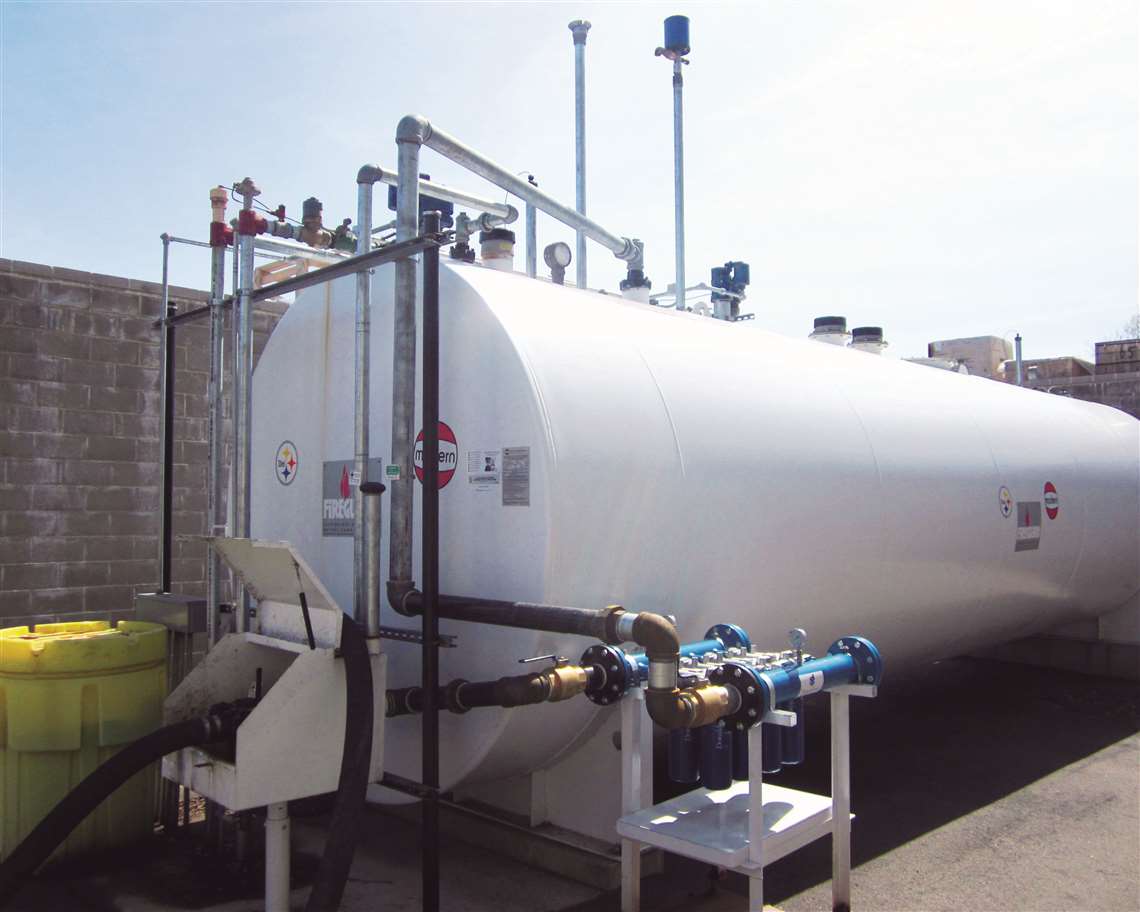Water & High-Pressure Common-Rail Fuel Systems
16 April 2020

High-pressure common-rail (HPCR) systems are precision components that require the cleanest fuel possible in order to function without breakdown. The old “clear and bright” visual inspection of fuel is no longer good enough when inspecting fuel for cleanliness; even microscopic contaminants can cause engine failure and costly downtime. HPCR engines have been around long enough that most original equipment manufacturers (OEMs) and operators are largely aware of the problems caused by dirt and other hard particulate in fuel, and there’s a general understanding of the importance of effective filtration both on the vehicle and on bulk fuel tanks.
Hard particles aren’t the only fuel-related threat to these engines, however. Research conducted by Donaldson Filtration Solutions showed water can play a major role in HPCR system reliability, especially in regions with high humidity and/or poor fuel quality. The company conducted a surveyed service centers and represented 90,000 repairs annually throughout the U.S. and Brazil. The company focused on the southern U.S. due to humid climate conditions.
“Some of the mechanics we surveyed told us that water-related issues are the largest challenge they face,” said Doug Lundstrom, product manager at Donaldson. “Issues with water can be quite complex, and equipment owners might not be aware that they are having water issues or how to deal with the issues effectively.”
Maintenance intervals
The general rule of thumb is that, in perfect filtration conditions, an operator can expect to get a million miles out of an HPCR engine before the lifetime overhaul milestone that usually consists of injector replacement. It’s expected that the injectors reach at least the 500,000-mile mark, when most engines receive a mid-life overhaul. But in humid climates or anywhere water in fuel is a reality, users are consistently getting much less than the expected mileage before injector replacement.
“Our survey indicated that 350,000 miles is a more realistic mileage that many operators are getting out of their engines before replacing HPCR fuel system components such as high-pressure pumps and injectors,” Lundstrom said. “Largely due to fuel issues, Southern shops especially are so used to changing injectors after such a short lifespan, that’s it’s just accepted as reality.”
While onboard filtration with robust water removal is a must on most HCPR engines, it’s also not the place to start. It’s vital for fleets to protect their bulk storage tanks, as well.
Water can cause damage in many ways. If it contacts iron and steel components, rust particles can enter the fuel stream and etch or abrade the system. Water droplets can cause abrasive wear due to water’s inherent lack of lubrication compared to the fuel itself. Water can dissolve certain contaminants, creating harmful deposits in the fuel stream. Pitting and spalling can occur when it is exposed to heat and pressure in tight spaces. And in colder climates, water in fuel can turn to ice.
If left unchecked, said Donaldson, water can interact with certain chemicals in fuel and create a “soft solid” that can plug onboard filters or cause deposits that can act as hard particulate. The presence of free water in any bulk or onboard tank can cause microbial growth that quickly plugs filters and an acid that corrodes metal components.
Filtration options
As the industry has moved to ultra-low-sulfur diesel (ULSD) and more biodiesel, removing water from fuel comes with new challenges. Many of the new additives and biodiesels can change fuel chemistry, making it more difficult to remove water from the fuel. These new chemistries (including surfactants) can coat filter media fibers and lessen their ability to repel water.
To combat water, the on- and off-road industries are moving to multi-stage coalescing filters. They allow water droplets to accumulate and grow in size before being repelled by a hydrophobic screen into a water collection area, but while they’re proven to be more effective at water removal, the company has found that some manufacturers are hesitant to adopt the new technology, especially in off-road equipment. This is in part because testing and research methods vary, and this leads to misunderstanding of the problem, said the company.
“Current ISO test standards for water removal really exist to compare one new filter to the next,” Lundstrom said. “They are not effective in predicting how a filter will perform in real-life applications. A filter is only new once; the effectiveness of a filter changes throughout its lifetime.”
To further complicate matters, most testing is done in a lab setting as opposed to field conditions. “Lab testing is accurate, but sometimes not the full picture,” Lundstrom says. “Out in the field, the challenges are almost endless. Field tests help add understanding of all the contaminates we’re facing, and only by understanding those contaminates can we develop technology to deal with them.”
The easiest way to protect your HPCR engine is to prevent water from ever getting into your fuel.
“When it comes down to it, it’s a lot easier to keep water out of fuel than it is to remove it later,” Lundstrom said. “There are many ways that water can get into your supply, so we recommend that you control what you can control.”
STAY CONNECTED




Receive the information you need when you need it through our world-leading magazines, newsletters and daily briefings.
POWER SOURCING GUIDE
The trusted reference and buyer’s guide for 83 years
The original “desktop search engine,” guiding nearly 10,000 users in more than 90 countries it is the primary reference for specifications and details on all the components that go into engine systems.
Visit Now
CONNECT WITH THE TEAM









